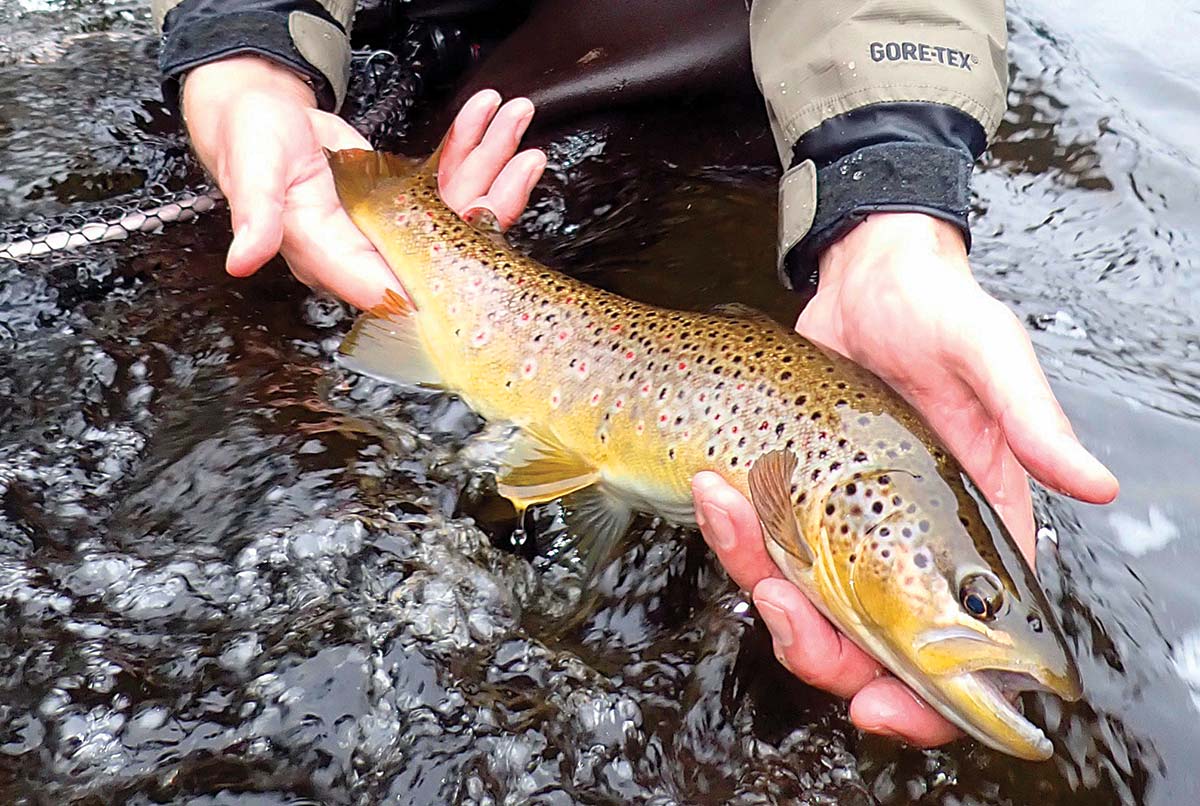
Scoring on late winter to early spring trout can be difficult, but once the secrets are unlocked the rewards can be great.
December may be the most wonderful time of the year, but if you’re a die-hard trout angler, the transition period from late winter to early spring is surely the most difficult. Mother Nature can’t seem to make up her mind. Is it spring yet or are we still doing winter? The water remains bracingly cold. There may be snow on the ground, and even though the sun is setting later each day, the finish line to summer is still frustratingly beyond the horizon.
On certain days hatch activity appears non-existent. You may go consecutive outings without seeing anything other than a few tiny midges flitting about. There are no glory hatches like Hendricksons, the true harbinger of spring trouting, or sulphurs, the brilliant yellow celebration of summer.
To pick the trout fishing lock, you’ve got to pay attention to detail, manage expectations, and be willing to make adjustments. Most of all, you have to understand conditions and trout behavior. Global warming trends have fundamentally changed traditional winter weather expectations, but constants remain. Northeast river temperatures may only be slightly above freezing, and depending on the severity of the winter, shelf ice may be a prominent feature (Never, ever walk across shelf ice to enter a river!).
Snow pack, or lack of it, also has an impact on conditions. If there’s white stuff on the ground, a sunny day with air temperatures in the 50s produces significant snowmelt. While it feels invigorating to be out on those days, melting snow translates into large volumes of cold water being introduced into the system, which is usually not good for triggering the bite.
However, if there’s no melting event, a mild, sunny day can be a kick-starter for hatches and increased feeding activity, but be aware of just the opposite effect – a sudden cold front can mercilessly kill the bite. Generally speaking, consistent conditions usually produce the most consistent action.
In March, water temperatures begin to inch upward and fish start to move around, especially larger fish, which need more fuel for their big engines. Torrey Collins, manager of UpCountry Sportfishing in New Hartford, CT, is one of the best trout anglers I know. He says this early spring movement is why you’ll often find bigger fish dominating the prime feeding lanes. “For me,” Collins says, “March has always been a good big fish month.”
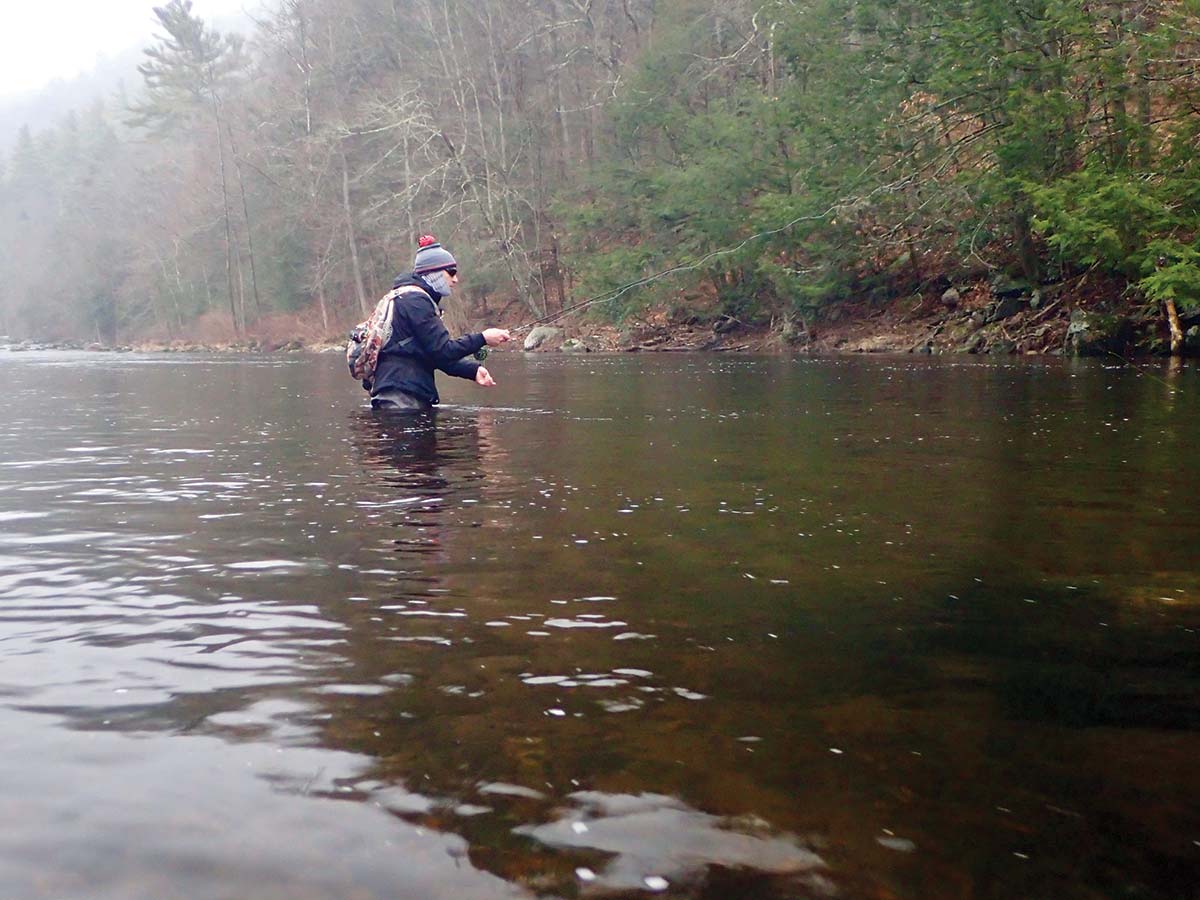
Trout Behavior
Most of what’s hatching during the late winter/early spring tends to be small, or even ridiculously small. Midges are the staple on most rivers and as the March equinox approaches and passes, we begin to see increased bug activity, including cased caddis and early stoneflies. But there are food groups other than invertebrates available to river trout – aquatic salamanders, sculpins, and minnows, just to name a few. Keep those creatures in mind when you’re throwing streamers or nymphing.
Trout don’t know that it’s cold. However, they behave differently right now than they do in mid-summer. Understanding that behavior can pay substantial dividends to the thinking angler. We know trout are cold blooded, and that in cold water their metabolism slows. They’re expending less energy, so they’re eating less. But they’re still eating. Finding those windows when they’re actively feeding is part luck, part careful calculation. This time of year, trout will generally be most active when the water is warmest, late morning through late afternoon. Of course, if there is a substantial hatch, they will take that opportunity to go on the feed so you should know the hatch tendencies on your favorite river.
Successfully navigating the no-man’s land of late winter also hinges on finding the fish. Unless there is an unusually warm early season, the trout will most likely remain in their winter lies. They may move into faster, shallower water on warmer days or during hatch activity peaks, but generally they’ll be in slower, deeper water. Remember, trout can’t think, but you can. Where can they go that provides refuge (deeper water, cut banks, structure)? Which pools have enough current to bring food to them, but not so much current to cause a significant energy drain? Find those places, and you’re likely to find trout.
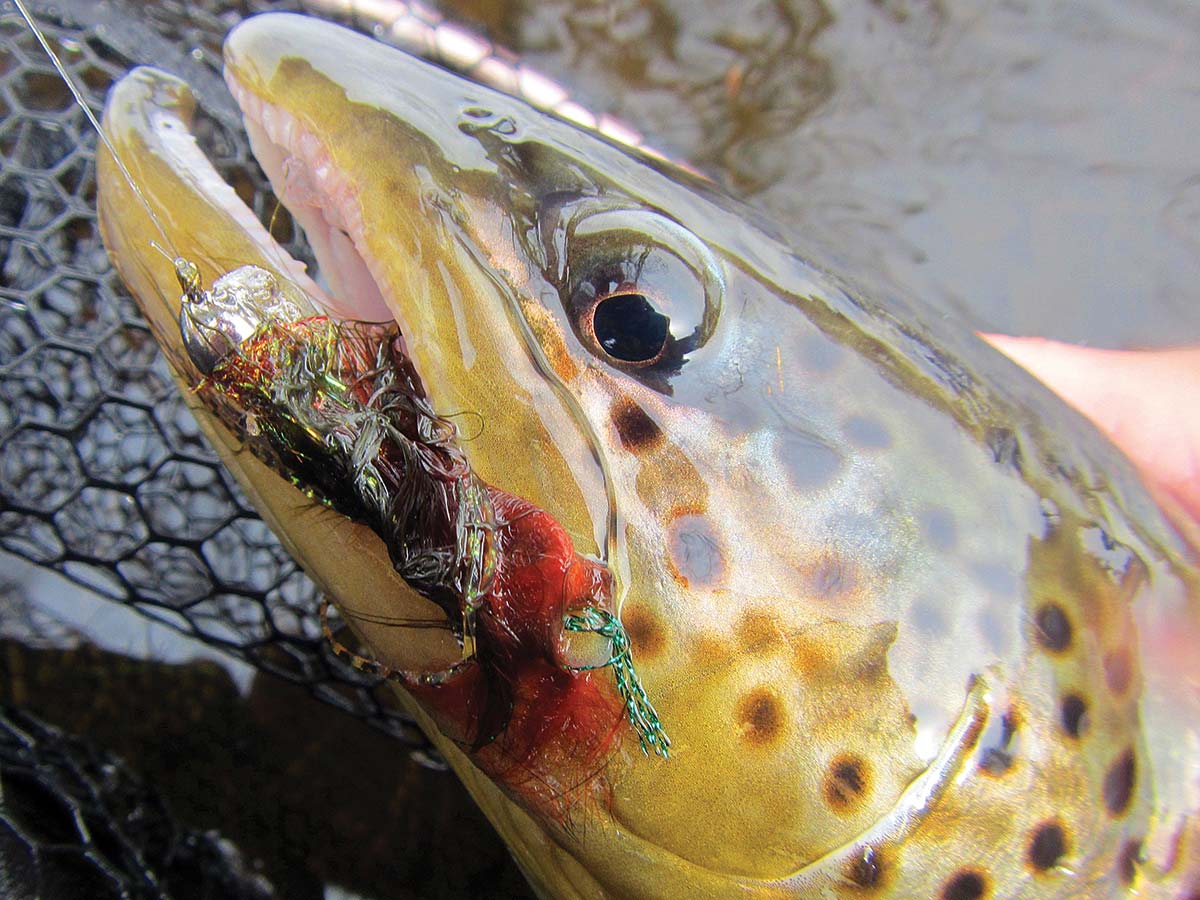
The Methods
Nymphing
The consistently most productive fishing methods will be the ones that cater to how and where the fish are feeding. That’s not to say that you can’t catch trout on dry flies in February and March, but moments when fishing the dry fly are highly productive are the exception.
That’s why Collins thinks nymphing is your best shot at catching early season trout. “Fish are lethargic, and won’t move far for your fly on a typical day. You’re basically spoon-feeding them the fly.” How you nymph and rig should be determined by conditions and the system with which you’re most comfortable. Confidence catches fish, and you’ve got to believe that the way you’re fishing is your best chance for hooking up.
Regardless of method, Collins advises using a long, lower diameter tippet—the part of your leader that’s always under water—not only to reduce drag, but also to get your flies down quicker with less weight. “I think the least amount of weight is going to fish better,” he says. “You’re going to hang up less, you’ll get a more natural drift, and your strike detection will be better.”
Base your nymphing method on conditions and where you think the fish are holding. If you sense or know that trout are close-by in a well-defined area, tight line would be a good option. If you want to cover more water, take a lesson from centerpinners and use an indicator. There are also days where it’s uncomfortably cold and/or the takes are rather subtle. If you’re dialed into the nuances of your indicator, you may find that it gives you the best shot at strike detection.
No matter how you nymph, you should be fishing at least two flies. I prefer an attractor or bead head pattern as the point or anchor fly. This time of year, my top dropper is almost always a midge pattern or tiny (size 18-20) soft hackle. Don’t be ashamed to try junk flies like eggs, Squirmy Worms or Mop flies. Collins notes that early spring is when suckers spawn, and that namesake fly is worthy of consideration.
I should also mention a technique that’s becoming highly popular: fishing a small, weighted streamer, tied on a jig hook, using long leader and tight line. Part dead drift, part bounce and jig, part wet fly swing, this method can produce not only numbers, but also larger alpha fish. “In March or early April, I will almost always try that method,” says Collins. “Last year the vast majority of trout I caught during those months that were 18 inches or better came on jigged streamers.”
While the flies are small by traditional streamer standards, they are by the same metric large for a nymph. It’s really a brilliant concept – a protein payoff delivered right to fish. This tactic is best used for closer work, but if you’re looking to cover large stretches of water, traditional streamer methods are the way to go.
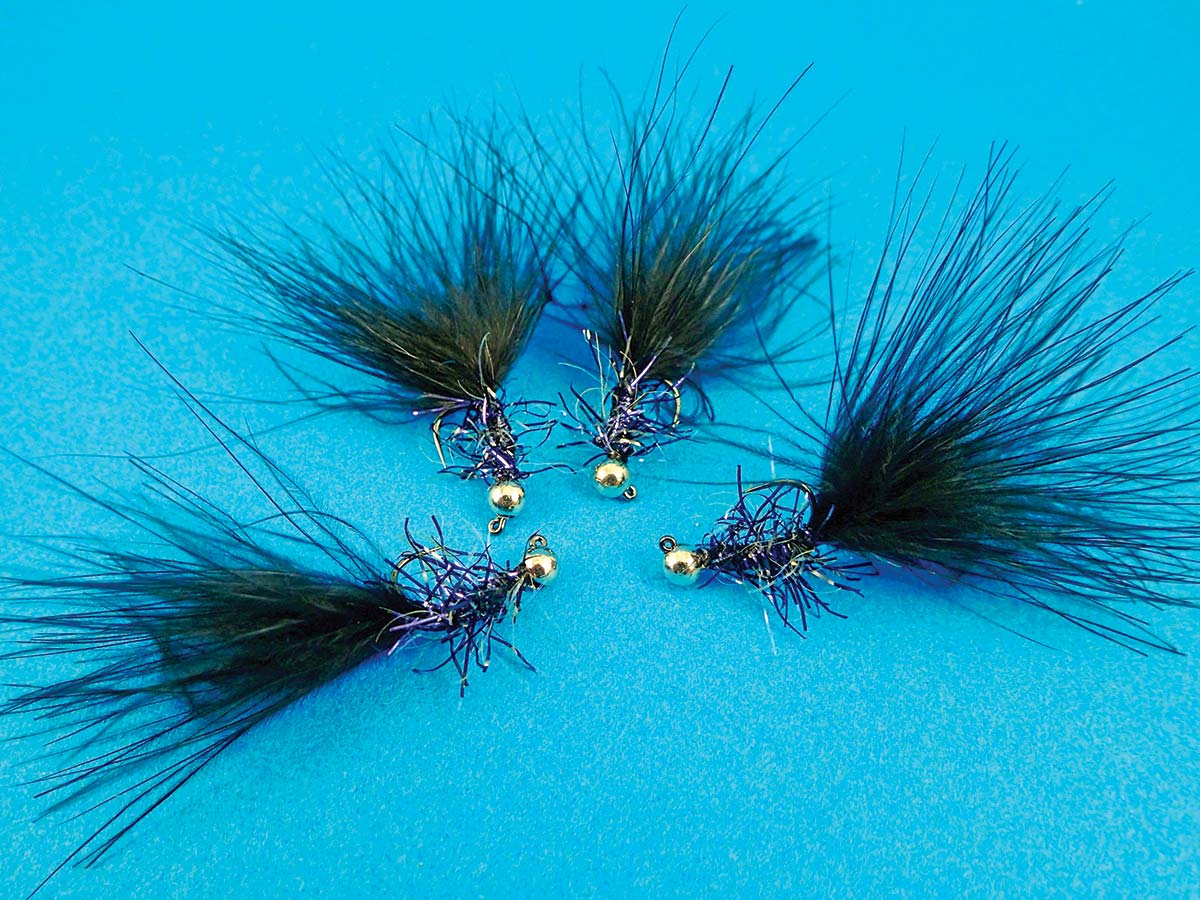
Streamers
There was a time when I didn’t consider streamers to be a viable cold water technique. That changed on a January day many years ago. I was fishing a deep, isolated run within the Permanent Trout Management Area of the Farmington River. A spin angler was taking trout after trout on a small jig-head fitted with a white soft plastic baitfish. I went to school on that, and returned the next day armed with my full sink line and some tungsten cone head white Woolly Buggers, and that began my love affair with winter streamer fishing.
This time of year I use either a full-sink tip integrated line with a floating running line or a floating line; the choice depends entirely on water depth, current speed, and what I want the fly to do. I’ll typically use a short (3 feet or less) leader with the full sink line and a more standard (7-10 feet) leader with the floater. The streamers I throw this time of year are smaller than the ones I’d use late spring through fall, most are in the 2- to 4-inch range. Entire articles and book chapters have been devoted to streamer color and pattern selection. I tend to keep things basic. If you’ve got white, olive, and black bugs, and if some of them have tungsten cones or dumbbell eyes, you’re covered for most situations.
The two most important variables in late winter/early spring streamer fishing are finding the trout and determining the best presentation, which is often low and slow. (Covering water would be a close third.) If you decide to dedicate a fishing session to the streamer cause, you need to manage expectations. You might only connect with one or two fish, but the chances of those fish being larger than average are good. Conversely, you should also be prepared to blank. This is one reason why I’m such a strong advocate of covering water and moving around to different spots. If the trout in one mark have lockjaw, they may be ravenous in another.
While streamers are a good general strategy this time of year, I particularly like them when you can declare to yourself, “winter is over.” Every year is different, but for me this moment happens when the sluggish pull of a winter streamer take becomes a sharp tug and violent head shake. Even though the water is cold, just having it jump a few degrees can have an enormous impact on a trout’s metabolism and feeding patterns.
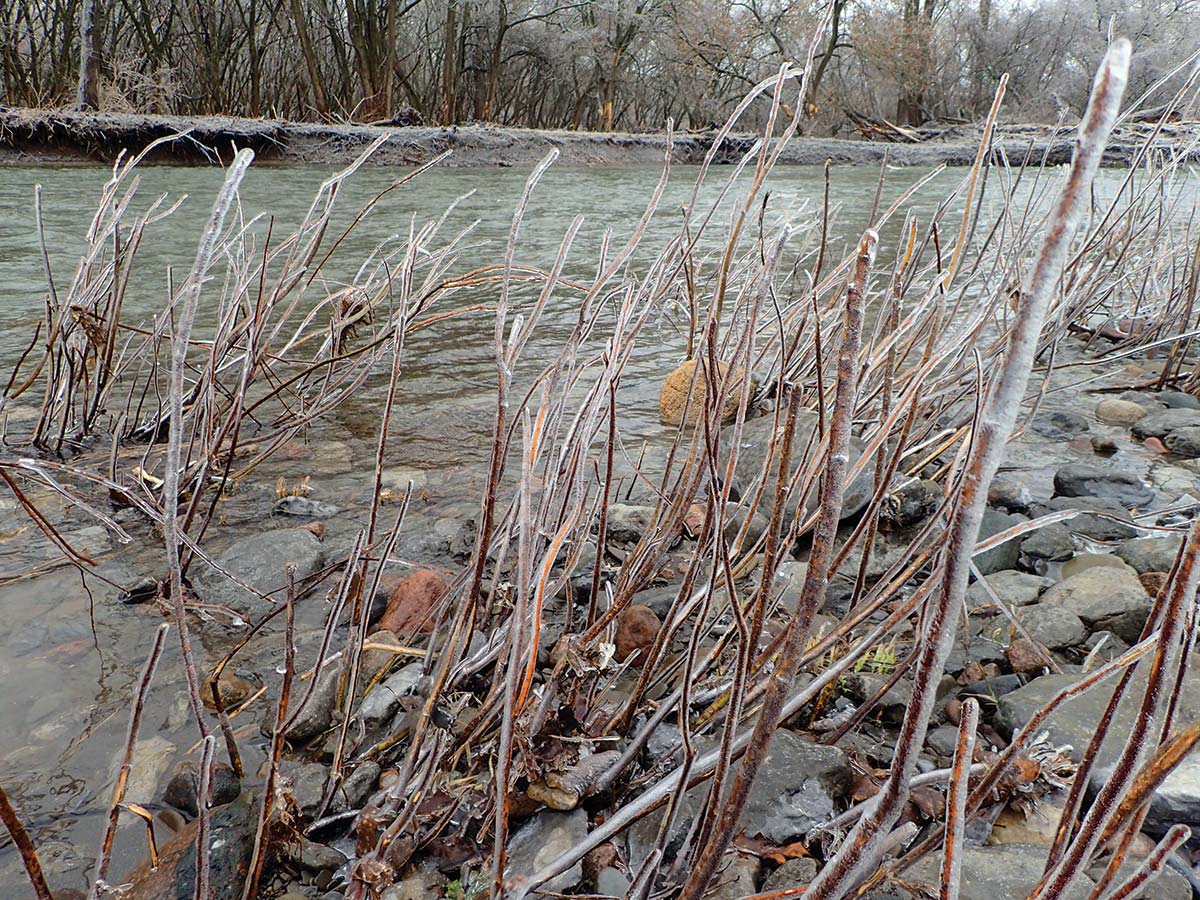
Stocking Truck Salvation
Finally, this is the time of year when a visit from the hatchery truck can turn a river into a trout park and a frustrated angler into an instant expert. Believe me, I’d rather catch a solid wild brown trout on a difficult day rather than land a dozen recent wards of the state. But there’s something fun—we’re here to have fun, right?—about not being able to keep trout off your fly, even if it’s dumb hatchery trout. Enjoy, and remember that summer is coming.




